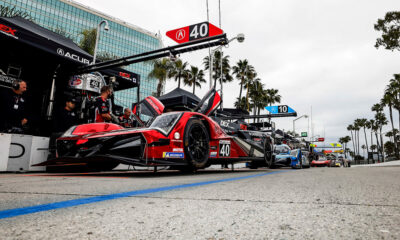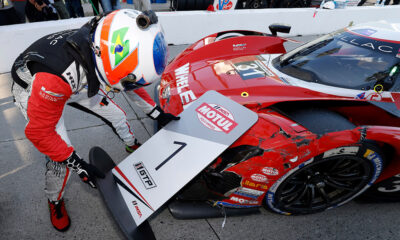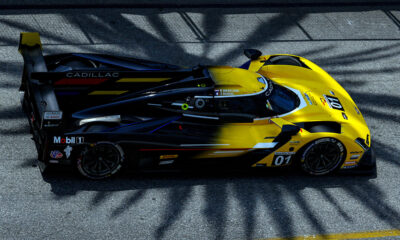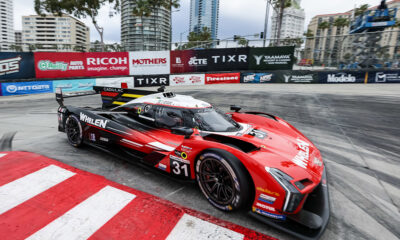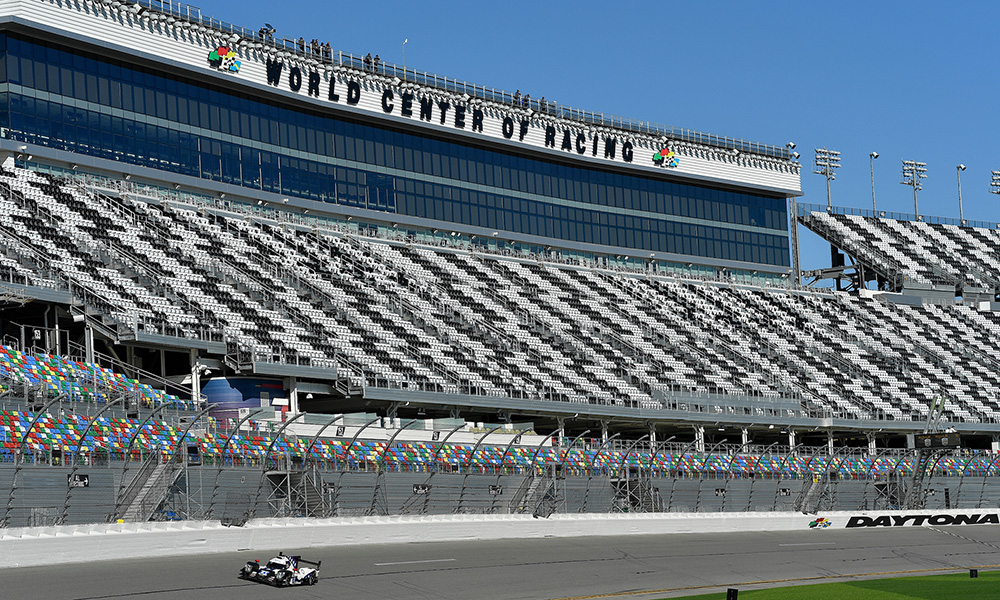
Photo: Michelin
Spotters are an integral part of the Rolex 24 at Daytona. From atop the stadium and grandstands at Daytona International Speedway, they act as a second (or third) set of eyes to ensure drivers in the IMSA WeatherTech SportsCar Championship run a fast, safe race and interact cleanly with other cars.
A team can either use one spotter or can use two or more over the course of the race.
How critical are spotters to the race? Crew chiefs may note drivers are just a nut between the seat and steering wheel, but piloting a race car is one of the most mentally and physically demanding activities imaginable, particularly in multi-class racing.
Drivers must be fiercely focused on the situation around them, but knowing they’re “clear all around” or that “there’s a slow car ahead” can be the difference between a successful overtake or a pile of carbon fiber carnage.
A spotter expands a driver’s situational awareness beyond what he or she can see. At a race like the Rolex 24, where more than half the race is run in darkness, an experienced spotter is like gold… or platinum.
Sportscar365 caught up with three spotters who will be working this year’s race to gain some insights into their interest in the role, their tips for success, and some of their best memories atop the spotter’s stand.
This may be good to take hold of while watching this year’s race, or if you’re iRacing and think you can handle a 24-hour race without this extra set of eyes…
SPOTTERS
- Jonatan Jorge, No. 71 P1 Motorsports Mercedes-AMG GT3
- Mike Sweeney, No. 86 Meyer Shank Racing Acura NSX GT3 Evo
- Steve Welk, No. 73 Park Place Motorsports Porsche 911 GT3 R
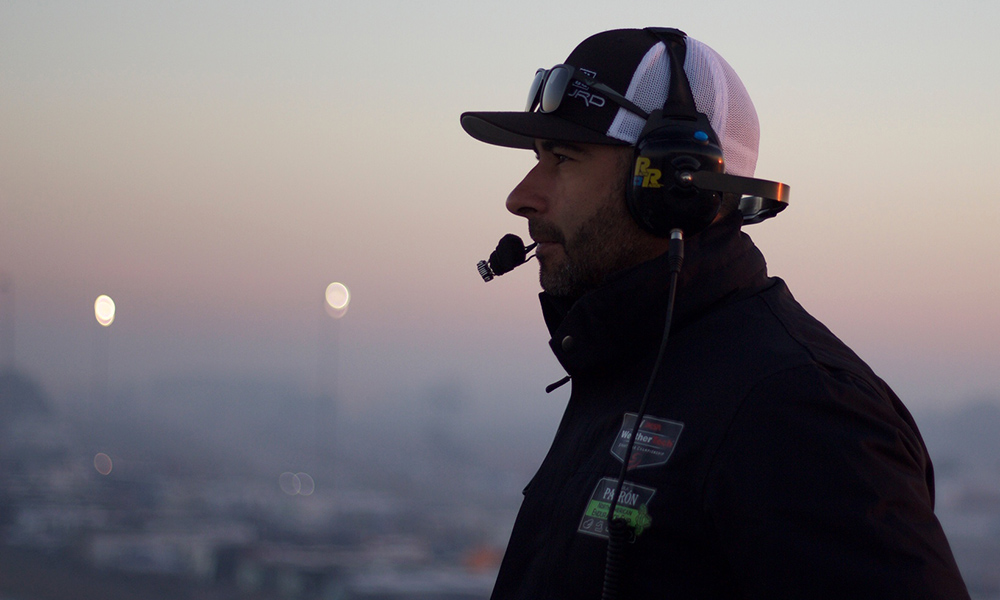
Photo: JJRD Inc./ P1 Motorsports
What piqued your interest in becoming a spotter?
Jorge: “Coming out of racing, you’re looking for something different to do. A friend, Grant Maiman, brought me in to spot with TRG for my first event. I showed up at Daytona and thought, man, I can learn from being on this car and with everything around it. I’m going into my 10th year now, and I’ve learned so much in terms of how drivers and teams approach this race. It becomes an obsession.”
Sweeney: “It was double-edged. As a former driver, you know what drivers want to hear in their ear. Then as a coach and instructor, you find yourself on the radio with them. And then it also helped if I was still racing. Say at Thunderhill, I’d drive, do some setup work, then jump out and help keep my co-drivers out of trouble. Your experience may help what a less experienced guy may want to hear.”
Welk: “It was pretty much right place, right time at Petit Le Mans with BMW about a decade ago. I was working with Skip Barber. A fellow coach said Rahal and BMW were looking for a guy, so I said I’d be good at it, even though I’d never done it before! RLL had both Scott Roembke and Bobby Rahal on the box. We made it all 10 hours, both cars finished, the drivers thought I did a good job, and they brought me back the next year.”
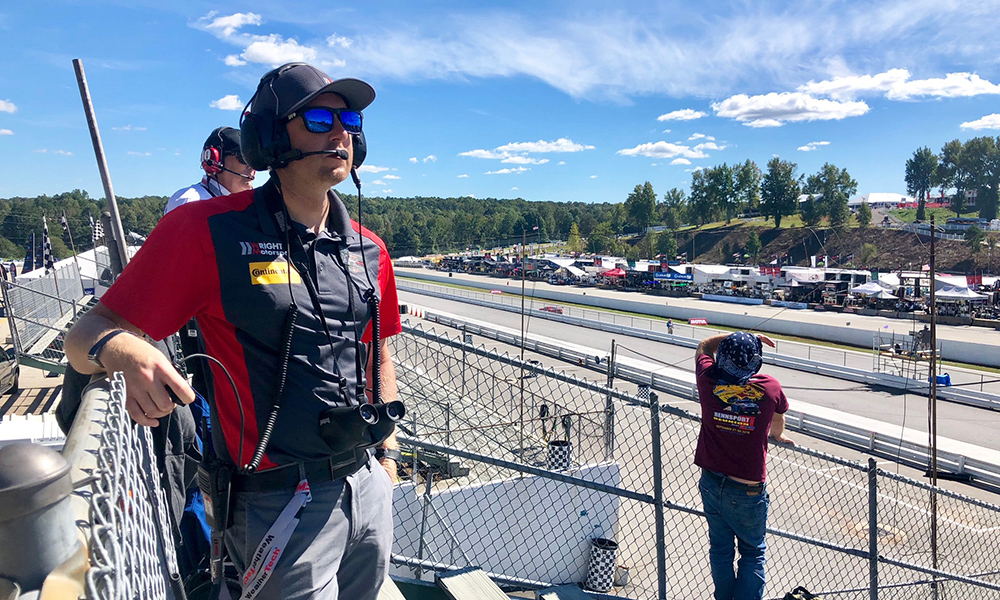
Photo: Wright Motorsports
In your view, what are the elements that make a good spotter?
Jorge: “The key is paying attention to timing. You need to know where your car is at all times. But that doesn’t mean you’re totally staring at the car the whole time. Sometimes you scan ahead to make sure no one has spun, or there’s no debris on track. You need to have ‘lobster eyes’ up there, scanning and looking at all different things. When you spot for a GT car, you need to know who’s coming behind. When you spot for a prototype, you have to alert them when they’re coming up on a bunch of GT guys. And you have to let the GT guys know to pick a lane and commit to it.”
Sweeney: “I always joke when people ask what I do, that I’m a rear view mirror! But it’s all focus: especially at Daytona. You can see 99 percent of the track all the time, but that’s good and bad. You don’t realize this until you have the stress of responsibility for your car, but you can’t look away. As a fan, you might lose a car for a lap, no big deal. As a spotter, that’s the worst-case scenario. Pick when you look away to know you’ll pick your car right back up. And you don’t watch the race at all. When Ricky and Filipe had their battle a couple years ago I had no idea! The rest is about being prepared. Have spare batteries. Have a backup headset cord. Plan your own pit stops! It’s about planning to a completely obsessive level, then executing. Usually, that works pretty well.”
Welk: “It’s a lot of keeping focused on what your car is doing and what’s going on around it. Be able to read the track and what drivers need for information. It’s a lot of taking in the scenes, and delivering the information as best as you can. It’s a lot of looking ahead, looking behind. Your eyes are on a swivel, but just be able to deliver information in a calm and orderly fashion.”
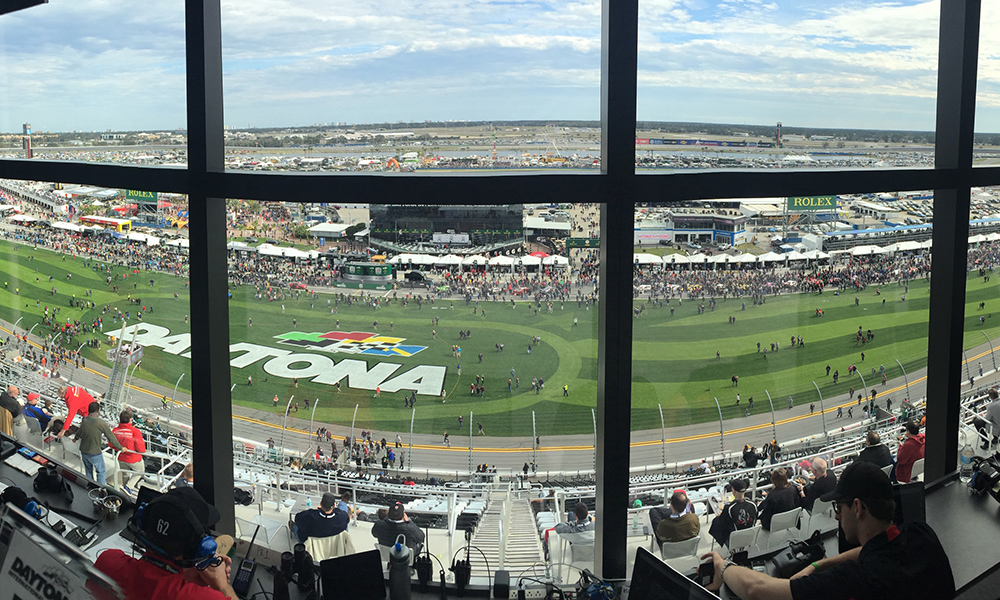
Photo: Michelin
Can or will you spot for all 24 hours?
Jorge: “I do stay up for all 24. The key though is don’t drink caffeine until the sun rises! The first year I’d had an energy drink and then two hours later had another one. I quickly realized that wasn’t a good idea! I’ll eat some sunflower seeds or Twizzlers. But for me, it’s like don’t touch caffeine until the yellow ball is on the horizon!”
Sweeney: “I don’t have to stay up 24 hours. Some guys do the full race. I did about 22.5 hours last year. If you have the luxury, having two spotters is great. That allows for shifts, like four hours on, four hours off.”
Welk: “I tried one year, did 22 hours and then had someone fill in for me in the middle of the night. But I feel pretty strongly that it’s good to have a break. Having a second spotter when you’re both awake means you have someone else to keep an eye on other things.”
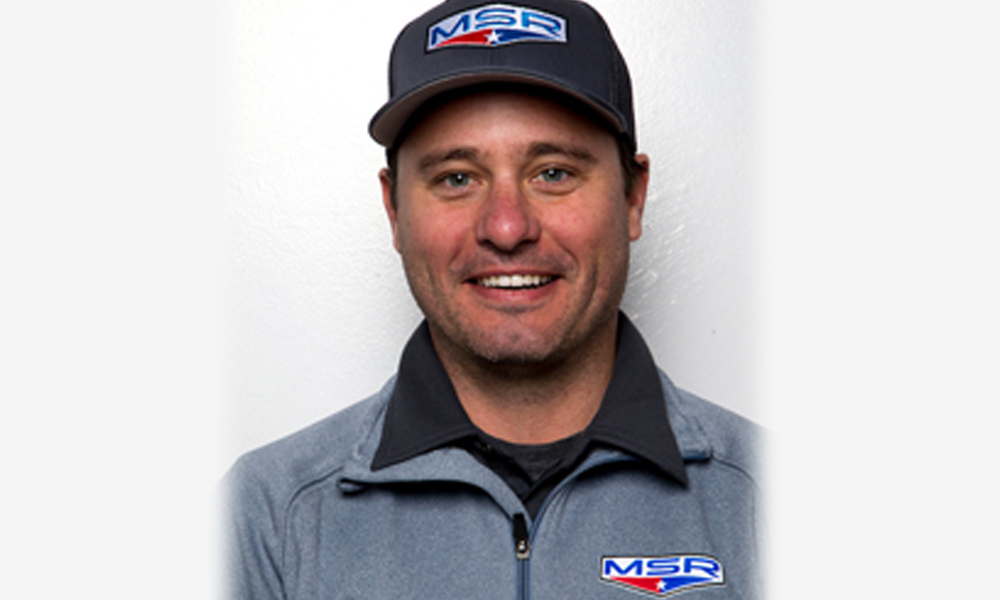
Photo: MSR
What are your most special moment or moments as a spotter?
Jorge: “There are so many, honestly. And the pros are incredible. I can’t really pinpoint one. But one year I was spotting for a PC car. I had a driver from the States, a driver from Brazil, and a guy who was either Colombian or Venezuelan. Either way, the Spanish speakers didn’t speak English, the Brazilian didn’t speak English, but I had to speak English to the guy from the States. So I ended up doing the 24 hours and spotted in three different languages! I was just destroyed. My brain got to a point where I talked in Portuguese to the guy from the States. I didn’t even know which way was up! OK which language? Crew channel, translating. It was the busiest 24-hour race I’ve ever done! It was absolutely crazy… and you’re doing things like coming up with terminologies. How do you say ‘clear’ in Spanish? I kept saying ‘car low,’ ‘car low…’ and I get on the other end, ‘who is Carlos?’ It was just funny. Man, what day is it? I’d spun out of control. That one sticks.”
Sweeney: “You have to say each one, whatever your last or next one is. But if I had to pick one, and it wasn’t at Daytona, it’d be our Laguna weekend last year. It was my home track, I’d worked there for Skip Barber for a while, and I’d grown up watching Indy cars. It’s one of my favorite places on earth. Katherine and Alvaro were completely unreal that weekend. Yet on top of being the fastest, we had a dramatic thing at the end where Alvaro had to throw down 10 qualifying laps to save the win. It was a big win at home, a pivotal point in the championship, and I got to sleep in my own bed and see my kids.”
Welk: “My most special one was the podium here, with Patrick Dempsey, Jan Heylen, Madison Snow and Philipp Eng. It was in 2015, my first year working with Johnny Wright and his group. It was a pretty good race. We came back from down a couple laps to get back to the podium. I wasn’t calling strategy, but I was relaying information to help with the strategy. It was a lot of fun.”




















